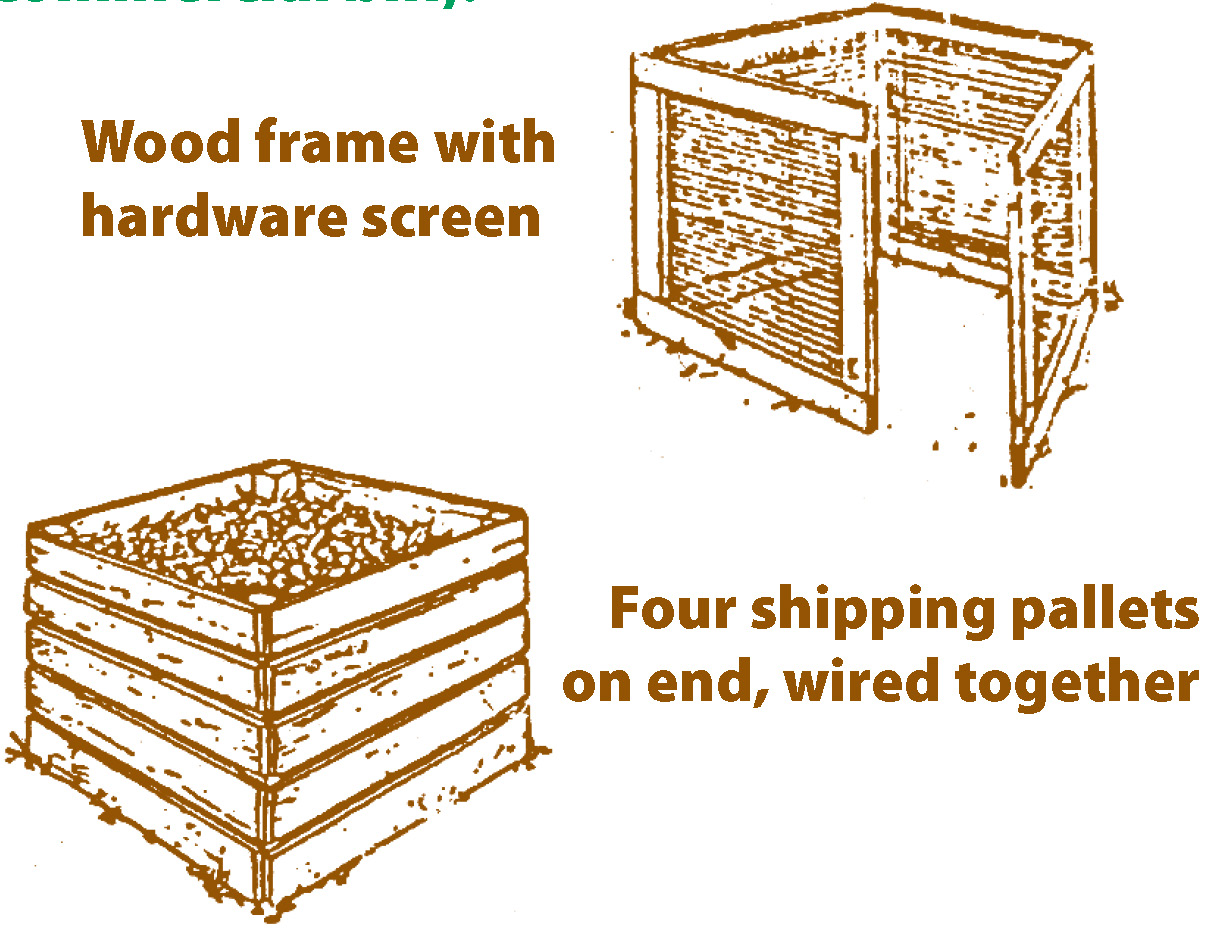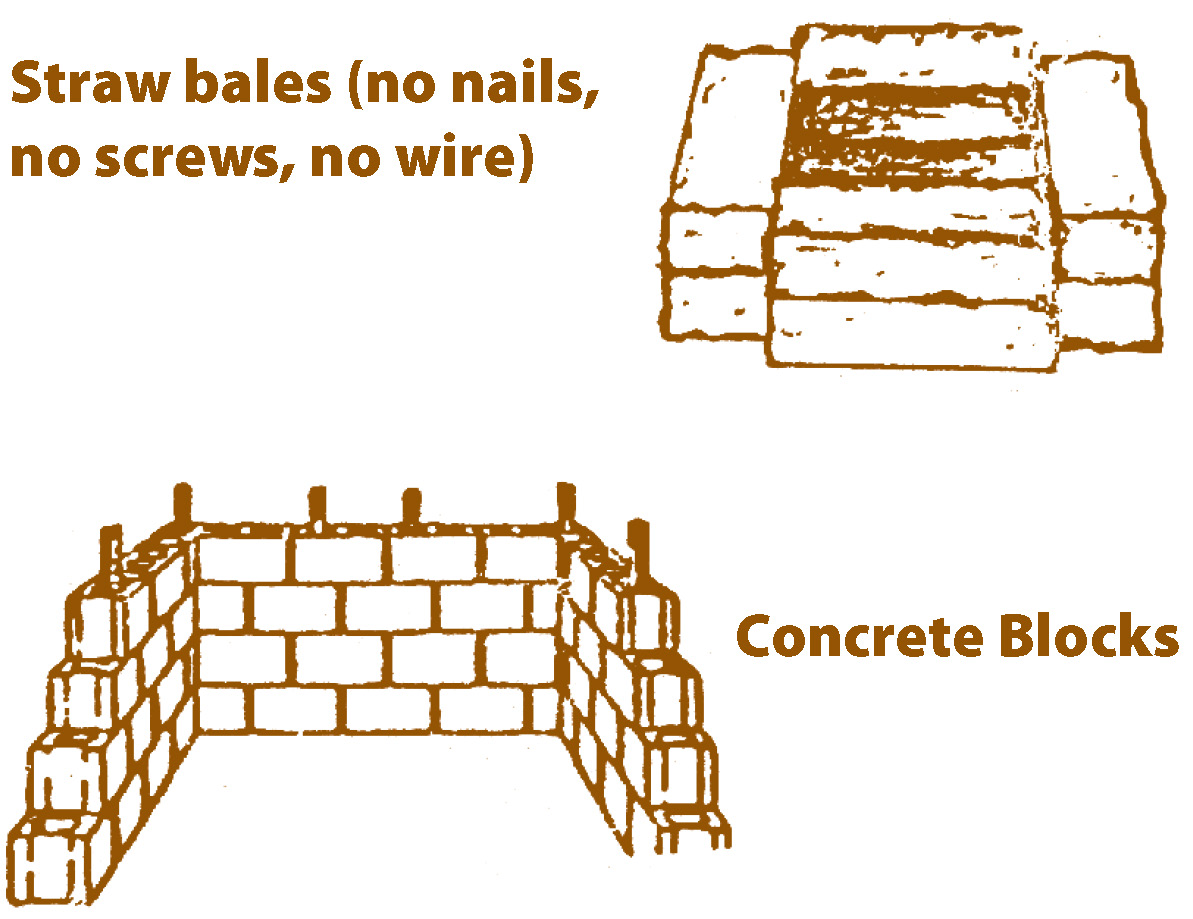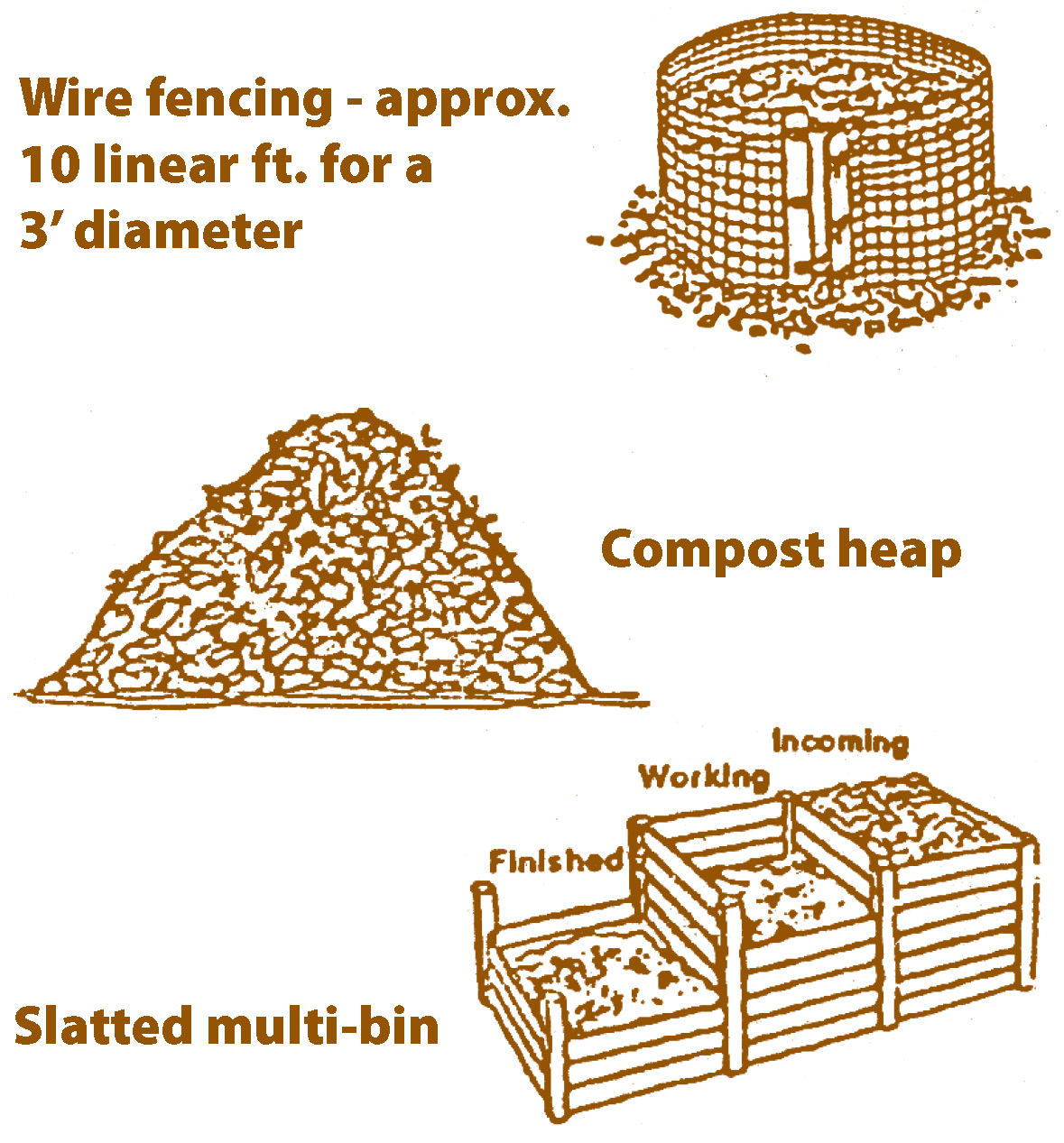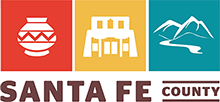![]()
Compost
Composting is "recycling" organic materials such as vegetable scraps, leaves, and other wastes into a rich soil amendment that can be used to benefit your garden and the environment.
Announcement: 2024 Backyard Compost Program Applications Available!
Santa Fe County is excited to announce an opportunity for residents to participate in the annual backyard composting program. This is a continuation of the County’s commitment to provide support for sustainable practices that County residents can implement at home. The Santa Fe County Sustainability Division is extending its partnership with Reunity Resources to offer free composting systems on a first come, first served basis to Santa Fe County residents who are currently customers of the County’s solid waste convenience centers. Applications will be accepted until 5:00 p.m. on May 31, 2024, and will be considered upon receipt.
Applicants must be residents of Santa Fe County with a valid County solid waste permit. This typically means that the applicant does not have a curbside trash pick-up service and instead disposes of their trash and recycling at one of the County’s six solid waste convenience centers. The backyard composting program is intended for residents who do not currently compost. Exceptions will be considered on a case-by-case basis.
To apply, review the eligibility requirements and complete the application below. Submit completed applications to sustainability@santafecountynm.gov.
> 2024 Backyard Compost Program Application (print)
> 2024 Backyard Compost Program Application (fillable PDF)
Why compost?
- Approximately 22% of the material in landfills is food waste and 12% is yard trimmings, both of which are excellent for making compost. Instead of sending these wastes to the landfill, make them a gourmet delight for your garden or neighborhood trees.
- You can create your own inexpensive soil amendment and at the same time reduce waste disposal costs.
- Your kitchen garbage will smell much better without food scraps.
- Less food scraps go down the disposal where water is wasted and septic tanks are overworked.
- Your garden and landscaping plants will benefit from the nutrients in this soil amendment.
- Compost has slower, longer release of nitrogen, compared to other fertilizers.
- Save money on your Santa Fe County convenience center permits by producing (and hauling) less waste.
How do I start composting?
Find a good place for a 3'x3'x3' compost pile. Both shaded and sunny areas are acceptable locations, however, always cover the pile with a carpet scrap or a large plastic garbage bag to seal in moisture. The reason for most compost failures in New Mexico is that they are too dry. A nearby water source (faucet or garden hose) is a good idea to ensure your pile stays moist.
Hint: Top off your kitchen scraps container with water each time you take it to the compost pile.
If would like to learn how to compost from an expert, you can take a composting class or attend a composting clinic taught by NMSU’s Santa Fe Extension Master Gardener’s program.
What if I don't have a yard?
There are clean, easy ways to compost indoors even if don’t have access to an outdoor area. And don’t worry, it doesn’t stink! In fact, it’s less stinky than a kitchen trash can that has food waste in it. That’s because the combination of organic material (like banana peels) and non-organic material (like plastic packaging) in your trash can keeps the organic material from properly decomposing, resulting in that terrible kitchen trash smell. If anything, your indoor compost will smell slightly earthy.
Check out this step-by-step guide to indoor composting that describes three different methods: compost containers, worm composting (also called vermicomposting), and the Bokashi method. Your newly created compost makes a great homemade plant fertilizer that you can use on your houseplants or outdoor potted plants—and greatly reduces the amount of waste that goes to our landfill.
We want to hear from you! If you tried any of these methods, let us know how it went.
And if you’re not ready to have a bucket of compost in your home, you can also collect your food scraps and place them in a friend’s compost pile, or bring them to a local farm or community garden—many have their own compost piles.
What do I put in the compost pile?
Your compost pile will need a balance of high nitrogen materials (AKA "greens") and high carbon materials (AKA "browns").
"Greens" are your vegetable scraps, fruit wastes, coffee grounds, livestock manure (except pig), rabbit manure, garden plants (including weeds*), etc.
"Browns" are leaves, tree clippings (shredded), grass clippings, paper, paper towels, etc.
Do not add these: Meat, bones, diseased plants, fat, oils, pet manure (cat or dog), milk or cheese (dairy products), wood ashes**.
* If you are concerned about weed seeds, place the weeds in a black plastic bag in the sun for a day or two. The high temperature will kill the seeds. Composting will also decompose most weed seeds.
** Wood ashes are alkaline and increase the alkalinity of our already too alkaline soils.
Will I need any special tools?
For a compost pile, a shovel or a pitchfork are the only tools needed! Gloves, and a composting thermometer are nice options as well.
For vermicomposting, some sort of bin and worms will also be necessary (see below for more specifics about vermicomposting).
Some basic rules:
Turn the pile approximately every 2-3 weeks to speed up the breakdown of materials. When building, turning or transferring compost to a new bin, wet each successive layer (approximately every 6” layer). This ensures that the compost is also moist in the center of the pile. Squeeze compost in your hand to judge moisture content. If the material feels like a damp sponge, its moisture content is sufficient.
I know the materials in my pile will be mixed up eventually, but how do I add them at first?

How do I troubleshoot if things are not perfect?
| Concern | Possible Causes | Solution |
| The compost has a bad odor. | Not enough air, excess moisture, and/or too compacted | Turn pile. Add dry material like leaves and wood chips if the pile is too wet. |
| The center is dry (this is very common in New Mexico). | Not enough water | Water each layer as you turn the pile. Cover pile with carpet scrap, plastic sheet, etc. |
| Low pile temperature. | Pile is too small (less than 3’x3’x3’), or pile does not have correct ratio of nitrogens to carbons | Collect more materials & mix the new with the old. Insulate sides. |
| The heap is damp and sweet smelling, but doesn’t heat up.* | Lack of nitrogen. | Add fresh grass clippings, manure, food scraps or nitrogen fertilizer. |
| The heap smells like ammonia. | Too much grass or other high nitrogen material. | Turn to aerate, add dry leaves or wood chips. |
| Pests in the pile. | Rotting food wastes attract pests. | Dig hole and bury new food waste deeper in compost pile. Turn pile more often. |
| *Heat generation is not necessary, especially if you are using redworms. | ||
Easy materials to use for constructing your bin (if you choose not to buy a commercial bin):



What is vermicomposting?
Adding compost “Redworms” speeds up the compost process by about 2 times and requires less turning of the pile. (“Redworms” are generally not the variety sold for fishing, however they are inexpensive and readily available.)
How long before I’ll have compost?
Frequently turning your compost pile and keeping it at the correct moisture point, can yield finished compost in several weeks. Piles turned less frequently may take as long as a year to produce finished compost, so get some exercise and turn your pile.
What does compost look like when it’s ready?
Finished compost usually settles toward the bottom of the pile and resembles a dark, rich, sweet smelling soil. Separate compost from the rest of the coarse material with a screen. Unfinished compost can be returned to the pile to finish.
How do I apply my compost?
Till in or top dress approximately 1” of the compost around garden or landscaping plants, bushes or trees. Apply as far out as the stems or branches extend. You can also mix it in with your house plant potting soils.
Contact
Michael Carr
Sustainability Specialist
mcarr@santafecountynm.gov
(505) 995-9515

